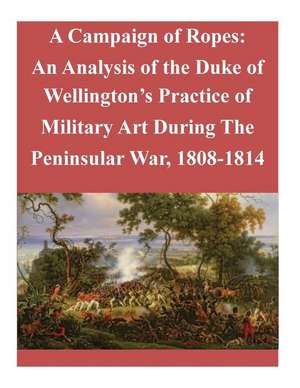A Campaign of Ropes: An Analysis of the Duke of Wellington's Practice of Military Art During the Peninsular War, 1808-1814
Autor School of Advanced Military Studies Editat de Penny Hill Pressen Limba Engleză Paperback – 5 dec 2015
Preț: 84.42 lei
Nou
Puncte Express: 127
Preț estimativ în valută:
16.16€ • 16.85$ • 13.43£
16.16€ • 16.85$ • 13.43£
Carte disponibilă
Livrare economică 28 februarie-14 martie
Preluare comenzi: 021 569.72.76
Specificații
ISBN-13: 9781519703590
ISBN-10: 1519703597
Pagini: 62
Dimensiuni: 216 x 280 x 3 mm
Greutate: 0.17 kg
Editura: CreateSpace Independent Publishing Platform
ISBN-10: 1519703597
Pagini: 62
Dimensiuni: 216 x 280 x 3 mm
Greutate: 0.17 kg
Editura: CreateSpace Independent Publishing Platform
